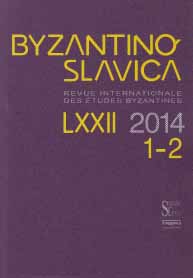Oats in Ancient Greek and Byzantine Medical Treatises, V century BC – XI century AD
Oats in Ancient Greek and Byzantine Medical Treatises, V century BC – XI century AD
Author(s): Zofia Rzeźnicka, Maciej Kokoszko, Krzysztof JagusiakSubject(s): Cultural history
Published by: AV ČR - Akademie věd České republiky - Slovanský ústav and Euroslavica
Summary/Abstract: The common oat (Avena sativa) is a cereal which is well attested in Greek medical sources. Between the Vth and the XIth centuries oats belonged to the crops which did not enjoy much appreciation. Across the Mediterranean the cereal was made use of almost exclusively as emergency food. The analyzed treatises suggest that it was utilized to prepare thin soups and thick gruels. Oat bread was not highly valued. Dietitians characterized oats as unappealing in its flavor, characteristic of limited wholesomeness, slightly styptic (and therefore slowing down the work of the alimentary tract), hard to digest, delicately desiccating and heating. As a medicine oats were mainly profited from to treat diarrhea, stomach problems, liver ailments, prepare cataplasms to stimulate diaphoresis, help remove mucus from the bronchi and finally feed the feverish.
Journal: Byzantinoslavica - Revue internationale des Etudes Byzantines
- Issue Year: LXXII/2014
- Issue No: 1-2
- Page Range: 37-64
- Page Count: 28
- Language: English
- Content File-PDF

